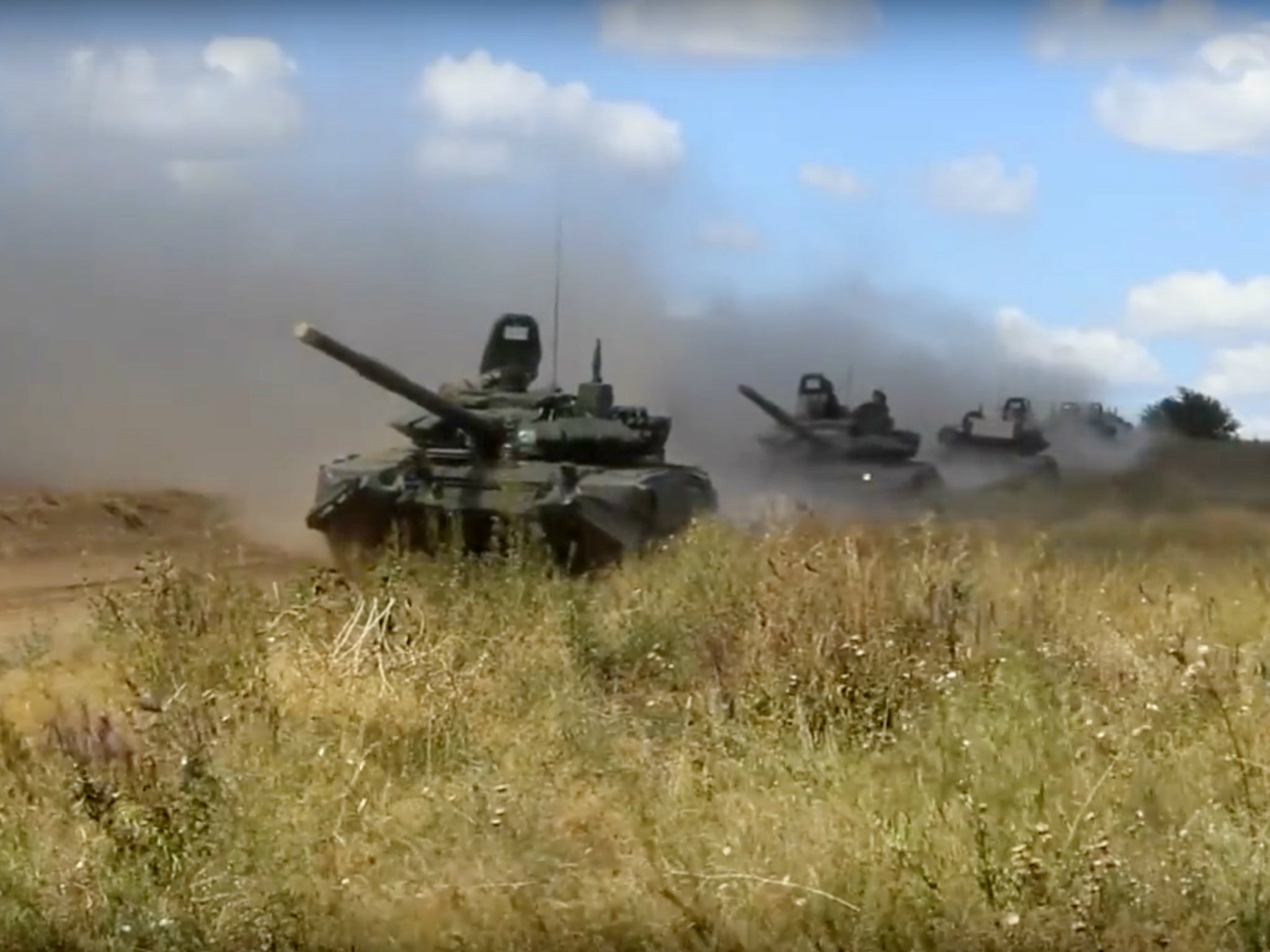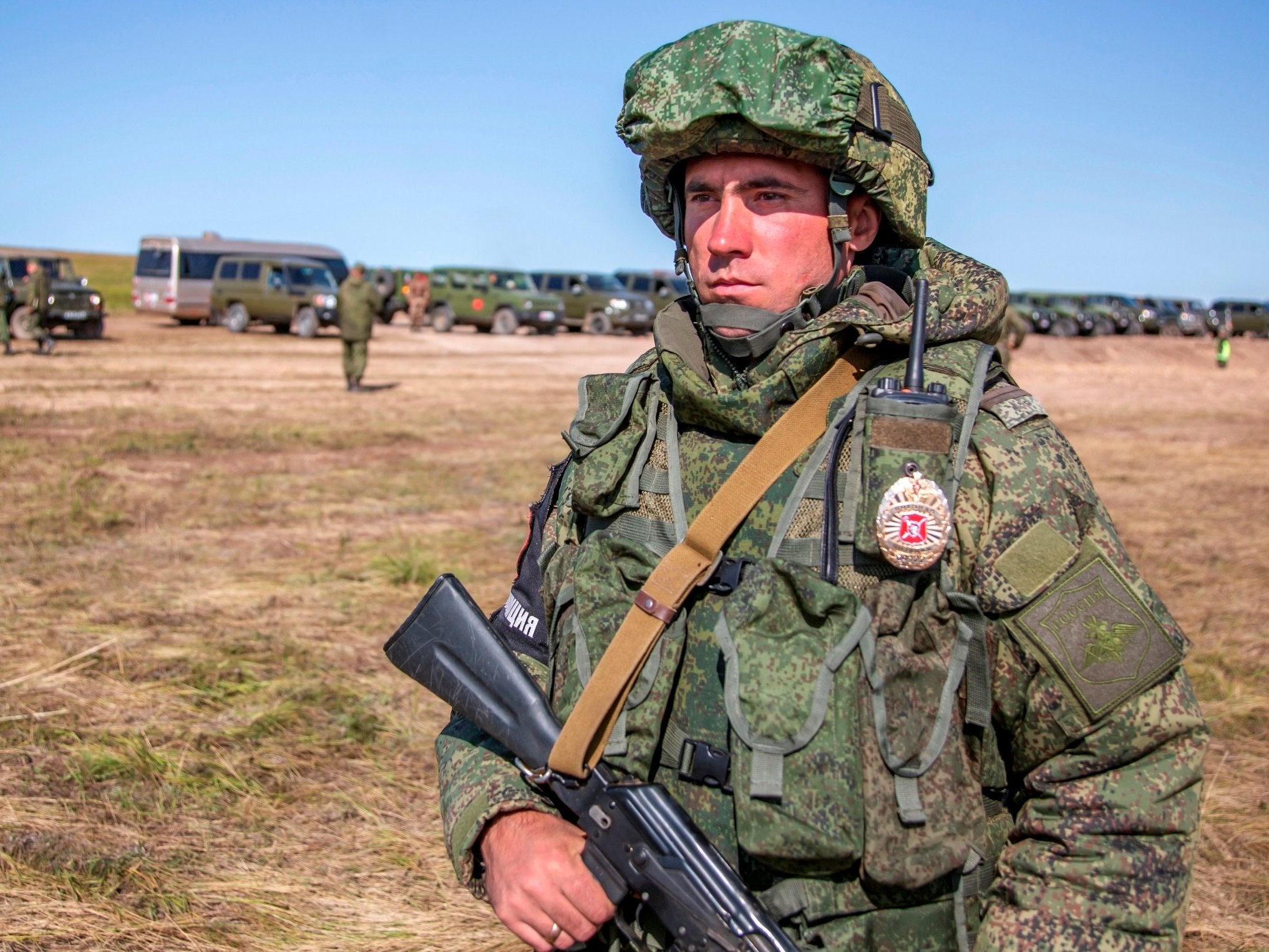'They will get the message': Russia deploys hundreds of thousands of soldiers and cruise missiles in biggest war games ever
Moscow defends 'routine' nature of exercises but is clear that China and other nations will have no doubt over the nation's military might

With the boggy woodlands of Siberian Buryatia in the background, anti-aircraft systems rumble into action in a show of Russian military strength.
Some of Russia’s most advanced surface-to-air missile technology is on display: S-400, S-300, TOR, BUK, Pantsir-S, and associated radar systems PRV-17 and NEBO-UM. Somewhere, out in the fields, are representatives of two military districts, 1,000 soldiers and 500 pieces of heavy military equipment.
The task is to destroy an unidentified enemy – one represented only by the winks of military officers, imitation ballistic missiles and other, real, cruise missiles, released from the air.
The display is the opening salvo in what has been advertised as the biggest military drill since 1981. The active phase of the war games, named Vostok-2018 (“East-2018”), will begin tomorrow, Thursday. Over the following five days, they will sweep over huge swathes of Russia’s eastern territory, right towards the Pacific.
Vostok-2018 pits combined forces from the country’s central military district and northern fleet against its eastern military district and Pacific fleet.
With nearly 300,000 soldiers, more than 1,000 planes, helicopters and drones, 36,000 tanks and 80 boats, headlines have predictably raged about preparations for a third world war. In the absence of other solid evidence, the descriptions feel hyperbolic.
That is not quite to say that Russia has rejected the theatre of it.
There have been very mixed messages from the top. At a briefing last week, the chief of the general staff Valery Gerasimov insisted the games were nothing to get excited about; these were “routine, defensive” drills “in line with published doctrines”.
Deputy minister for defence Andrei Kartapolov, on the other hand, said: “We’re doing it so our partners can see we … can do any task … in any theatre of war. Believe me, they will get the message.

Nato seemed to get that message. Speaking to Reuters, its acting deputy spokesman Dylan White declared that the games proved a “focus on exercising large-scale conflict” and fitted a “pattern” of a “more assertive Russia, significantly increasing defence budget and its military presence”.
The show, however, was less world-up-in-smoke as one obscured by mist. Thanks to low-hanging clouds, the made-for-tv show did not produce the complete display of military might that Russian commanders had hoped for. Only a fraction of the trajectory of anti-aircraft missiles were visible before they disappeared into the grey cloud.
We were instead to take it on word – or the pre-printed press release – that the missiles all reached their target.
“All enemy targets have been destroyed,” said Colonel Sergei Kuryshkin at the end of the drills. Colonel Kuryshkin, who is head of the surface-to-air operations centre at the Telemba range, said this was what his soldiers had “been training for – technically and ideologically”.
But he was coy about which enemy they were practising against. “A notional enemy,” he says, smiling, before adding: “A probable one.”
In Soviet times, Vostok drills were performed regularly and with a clear foe in mind – China. Skirmishes along this Siberian border were common, especially in the late 1960s, and the Soviets kept a significant military presence in the region. Vostok drills had a purpose, and were taken seriously.
Since the fall of the Soviet Union, obvious military tension disappeared. And following the annexation of Crimea, a new dynamic has appeared: Russia’s political and financial isolation. The Kremlin believes a pivot east could change that.
Since 2014, Vladimir Putin has made a purpose of improving ties with China. Those efforts have not always been successful, or, as in the case of oil deals, particularly profitable. But Mr Putin has seemingly decided to play Russia’s strongest card – military cooperation – in an attempt to woo Beijing definitely into Moscow’s court.
In what is a major strategic shift, Chinese armed forces will for the first time participate in this year’s Vostok drills. Approximately 3,000 soldiers, 30 planes and 900 heavy armoured units will join Russian and Mongolian forces. It is the first time Russia has cooperated with a non-ally in such a way.
Those joint drills begin on Thursday at the the Tsugol traifrag range, near the border with China and Mongolia.
They are likely to prove a test of regional diplomacy as much as of military skill.
Japan, which remains locked in territorial dispute with China, has already expressed concern. The country was “monitoring activities that are leading to an escalation in tensions in the western part of the Pacific,” Itsunori Onodera, Japan’s minister of defense, said.
Join our commenting forum
Join thought-provoking conversations, follow other Independent readers and see their replies
Comments
Bookmark popover
Removed from bookmarks